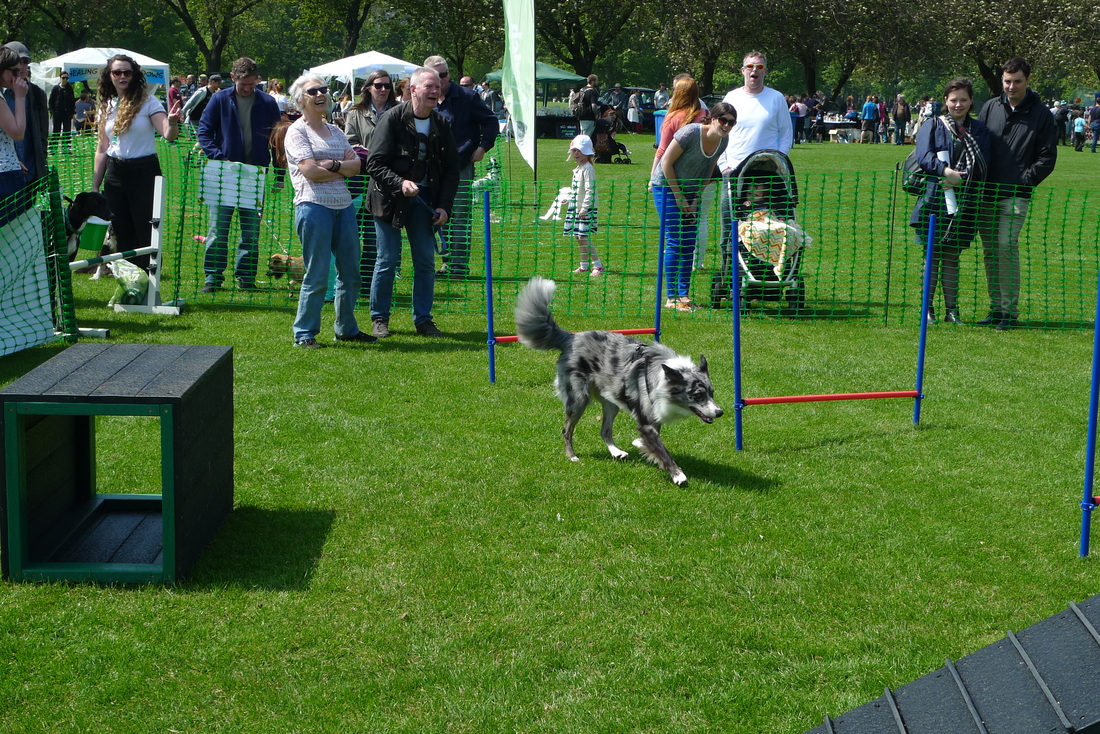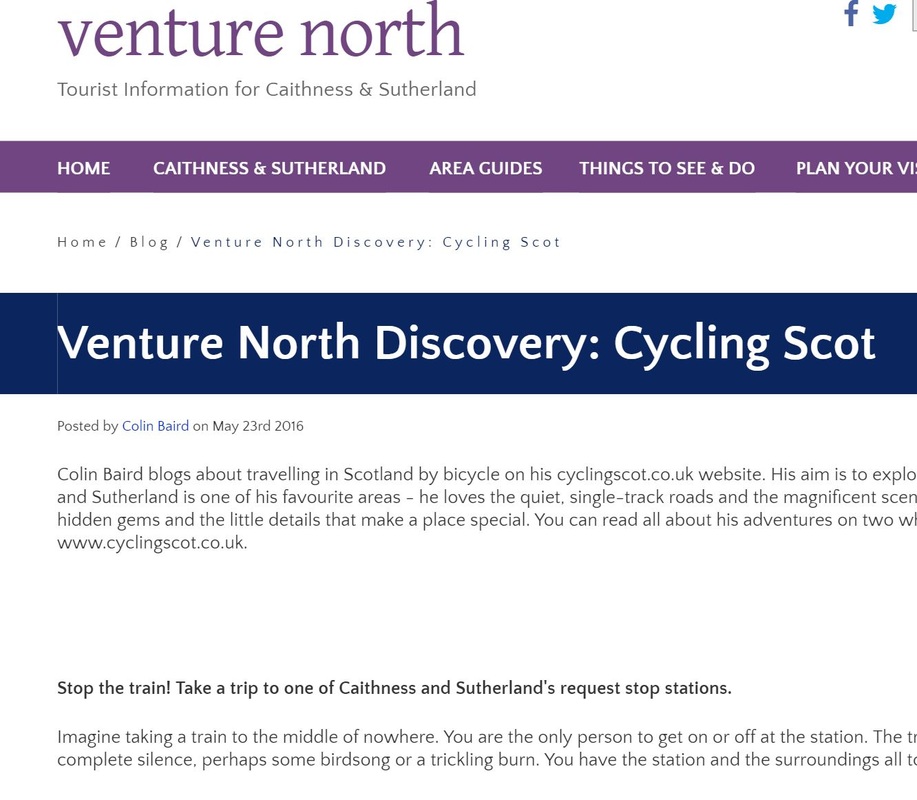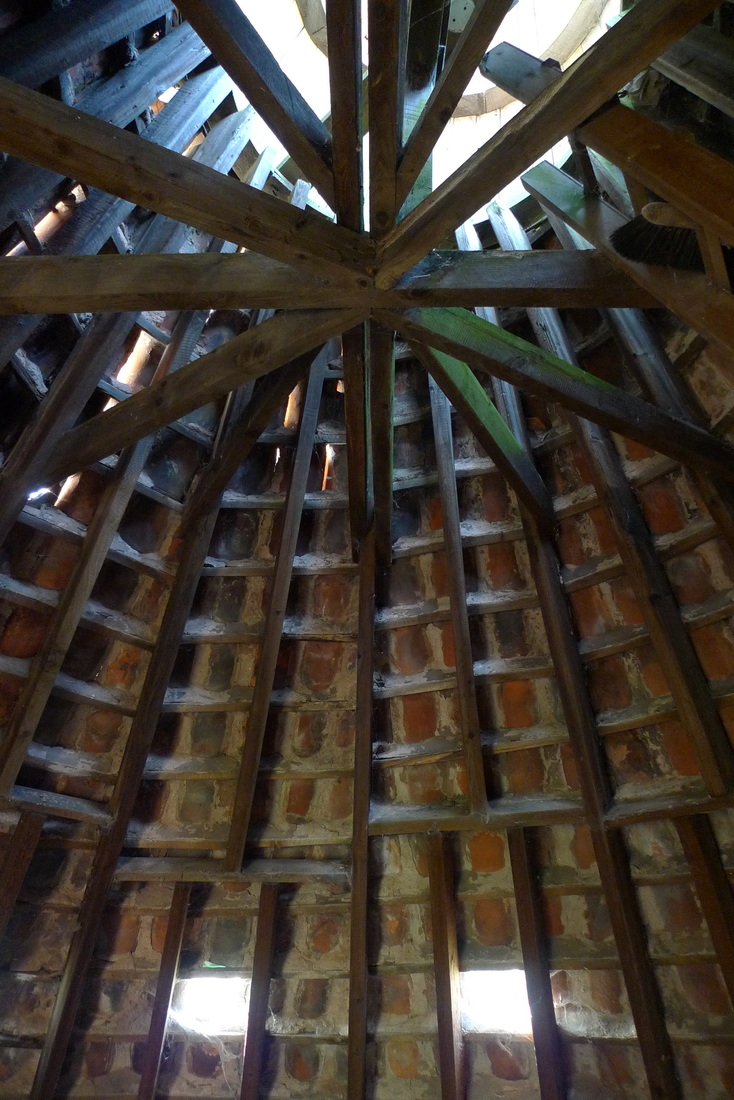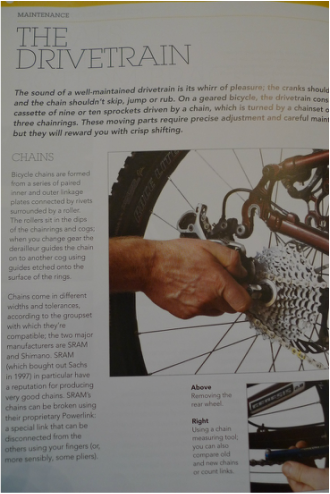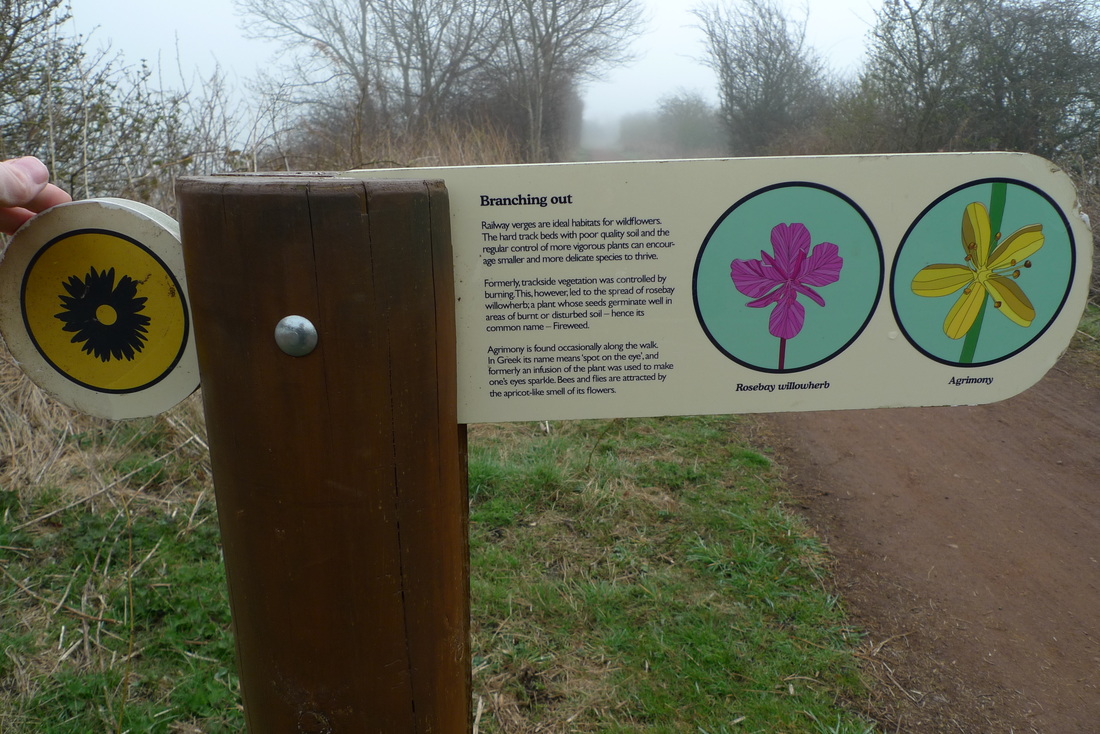|
Some books totally inspire you to do something new. This is one of those books. As a result of reading Microadventures by Alastair Humphreys I now want to try sleeping outside in the countryside in a bivvy bag. This is something that I have never really considered before, but this book makes me want to.
Alastair Humphreys is best known for cycling around the world in an epic 4 year adventure. He wrote two amazing books about his journey. I have read them both and would thoroughly recommend them:
In the introduction to Microadventures Alastair Humphreys writes that he will have failed if you read this book and do not do at least one of the things in it. He has produced a book that captures your imagination and it is very difficult to read all of this and not want to try out his suggestions for adventure.
The concept of the Microadventure is that not all of us have time, money or the inclination to embark upon huge expeditions on the other side of the world, but we can still have an adventure right here, in Britain. We have wonderful countryside, some of it remote and as Humphreys points out, some of it very close to cities. He argues that this makes it easy to escape your daily life and go on an adventure. He proposes the idea of a "5 to 9" Microadventure where you finish work and head off into the countryside for the night and then return to work the following morning. He also writes about walking a lap of the M25 in one week to show that even in the most boring places an adventure is possible. Humphreys gives plenty of ideas for easy and accessible adventures that involve cycling, taking to rivers and hiking. The book is a glossy, colourful format filled with great photographs of the Microadventures and the short chapters make it easy to dip in and out. The rear pages of the book give advice on equipment, how to identify trees, how to learn birdsong, how to read stars and how to navigate. Once I started reading I could not stop. The whole concept of Microadventures really captured my imagination.
If you want to be inspired to get out there and have an adventure then treat yourself to this book. I loved it and I hope you do too. Click on the box below to purchase the book from Amazon:
0 Comments
A beer created especially for cyclists. The concept of this beer is that you can have a drink and still be able to ride your bike afterwards. It tastes more like a soft drink than a beer with a malt and fruity flavour. Tempest Brewing are located in Tweedbank in the Scottsh Borders. They created this beer for the Tweedlove bike festival. In Germany "radler" means cyclist and there is a tradition of blending light beer with fruit juice to create a drink ideal for bike rides. Tempest added their own twist with blood orange and grapefruit. This beer is only 2%, but that is the whole point. You should be able to have this drink and then safely ride a bike. This means that there is less of a beer taste and this might make it less appealing to those who love a traditional pint. My first impression was that it is an unusual taste and not really like beer or a soft drink, something in between. The blood orange and the malt are the dominant flavours. It does the job of refreshing you and the more I drank the more I enjoyed it.
I love the design of the bottle label with the shield featuring a bicycle and an idyllic countryside scene with trees, river and sun peeking over hills. Perhaps not a drink for traditionalist beer drinkers, but this has a specific purpose and market in mind. Good on Tempest for trying something different and introducing a continental style of drink to Scotland. I will certainly be taking it on my next bike ride and looking forward to the cool refreshment when I am warm and thirsty. Tempest Brewing has a shop in the brewery, located in an industrial estate that is adjacent to Tweedbank station, the last stop on the Borders Railway. There are stockists throughout Scotland, mainly in the east and the Borders. The Tempest website lists all the stockists and you can also buy online.
Comfort, elegance and delicious locally sourced food. Mackays Hotel offers all of this in a characterful nineteenth century building in the centre of Wick.
If you stay at Mackays, and even if you don't, make sure to have a meal at the restaurant. Tasting something from the region that you are visiting should be high on your priorities. Number One Bistro at Mackays Hotel excels on this front. The food is delicious, beautifully presented and authentic to Caithness. My starter of local crab rillette with capers and pickled cucumber salad was creamy, lemony and succulent. It left me wanting more. The main course of pan fried Scrabster hake with pea puree, capers and brown shrimp butter was sensational. Scrabster is the most northerly port on the Scottish mainland and about 22 miles from Wick. It was a meaty piece of fish with crispy skin that sat on a bed of mash that was creamy smooth perfection. I loved the shrimp with their satisfying chewiness.
The dessert was Halkirk marmalade pudding (hot) with vanilla custard and minted orange segments. Halkirk is a village about 16 miles from Wick. The orange segments had mint leaves torn over them. Such a simple idea but a brilliant flavour combination, it worked so well.
Dine on the shortest street in the world The meal comes with some nice extra touches. There was brown bread flavoured with onion and white bread flavoured with rosemary. A complimentary whisky liquor from Old Pulteney, Wick's distillery and the most northerly on the mainland, was presented at the end of the meal. My table was located on the shortest street in the world. This is Wick's most famous quirky claim to fame. The entrance to the restaurant and a couple of the tables are located on Ebenezer Place, officially the shortest street in the world, at 2.06m. The restaurant is kitted out with marble tables, polite waist-coated servers and a sophisticated, but laid back atmosphere. I liked the old photos on the wall of Wick street scenes. Next to my table the photo portrayed a woman with a massive, ballooning skirt that stretched almost to the ground. There was a man in a flat cap, suit and waistcoat. Behind him is what looks like a whisky barrel dumped at the side of the road. Perhaps this is how whisky was delivered to public houses or had it fallen, unnoticed, from a cart? Location, location, location The hotel is in an excellent location next to the River Wick and less than 5 minutes walk from the train station and the town centre. I love the building. The unique shape reminds me of the iconic Flatiron building in New York. It is this shape that has resulted in the narrowest part of the building being located on the shortest street in the world. Inside the building, the corridors leading to the rooms have quirky angles that replicate the shape of the building. Plenty of interesting 19th century architectural features remain, including arched recesses. Special mention has to go to the window shutters. My room still had its wooden shutters, although they were painted over, but I could see that all the mechanism was still there. Perhaps it is just me, but I love traditional wooden shutters. They are really effective at keeping out light and noise and retaining heat in a room, but they went out of fashion and many were ripped out of Victorian-era properties. I think it would be really special if the shutters could be returned to operation at Mackays as I have yet to come across a hotel that still has them.
My room was very comfortable and stylishly decorated with tweed soft furnishings. I found it quiet at night and had a perfect sleep. A nice touch is a copy of a guide book to the North Highlands by Charles Tait. It is great bedtime reading and full of information about what there is to see and do in this part of Scotland.
If you are heading to Wick and Caithness then Mackays Hotel is a comfortable base with really superb food. You can book the hotel using this box which links to HotelsCombined, a site that searches across hotel booking sites to find the best deal:
Hurricane Jack has a bitter and fruity taste. The more I drank the more I liked it. This is definitely something to have on a warm and sunny day. It is brewed by Fyne Ales, located at beautiful Loch Fyne in Argyll. My first impression of Hurricane Jack is of a bitter taste. It took me several sips to get used to the bitter taste, but the more I drank the more I liked it. The bitterness is tempered by the fruit, so you are left with more of a subtle fruit taste in the mouth and the bitterness is dispersed. It is gently carbonated so you get a nice tingly fizz on the tongue. It has the classic smell of hops. It is a refreshing drink, so a good one to have after a long cycle trip. Hurricane Jack was a character in Para Handy, a newspaper series of stories about an early 1900s steamboat that delivered goods to Loch Fyne from Glasgow.
Fyne Ales was founded in 2001. The brewery has tours, a shop and a bar where you can have locally sourced food, like venison sausages with your pint. Fyne Ales also organise the annual FyneFest, a festival held in the fields around the brewery. It features guest beers from around the UK, live music and interesting food. If you are cycling in Argyll make sure to give Hurricane Jack a try. It is widely available on draft throughout Scotland and the bottled version can be easily tracked down in supermarkets. Every June in Edinburgh the Meadows Festival takes place over a weekend. The Meadows is a major cycle route in the city and also part of National Cycle Route One, so you might want to time your bike ride for when the festival is taking place. There is a massive selection of food and drink stalls, live music, loads of antique stalls with plenty of interesting curios, clothing stalls and dog shows. Take a rest from the saddle, sit on the grass in the sun, grab a burger, walk around the stalls and enjoy the atmosphere. The Meadows Festival is free and takes place on a Saturday and Sunday. It is very popular and attracts about 25,000 people, but the Meadows are huge, so there is plenty of space for everyone. If there is warm and sunny weather people pick a spot on the grass to take a break between browsing stalls or to eat something delicious. The live music begins around 11.00 am and there are leaflets at most of the stalls with the line up of local bands: The selection of food and drink stalls is impressive. I tried a delicious fresh lemonade from Mutley's Crepes and they were doing a roaring trade in savoury and sweet crepes. I saved myself for an applewood smoked hot dog from a nearby stall. The Marshmallow Lady also had a stall. Let me tell you, these are the best marshmallows you will ever taste. They come in exciting flavours like Chocolate Mousse, Prosecco & Rose, and Maple Bacon and Raspberry. They taste much better than traditional marshmallows. Trust me on this, they are amazing! I bought a bag of the Key Lime Pie flavour which features a biscuit base. Superb! The dog shows give people a chance to take their pet around an agility course. I watched several pooches give this a go and some were plain awful, but the border collies seemed to do the best. There are loads and loads of antique and trinket stalls. Books, CDs, clothes, tools, even a taxidermy warthog head with its hooves as coat hooks. You name it, you will find it here! Some stalls are private individuals clearing out their attic and others are professional antique businesses. There are lots of bargains to be found, so you might want to attach some panniers to your bike so that you have space for a purchase or two. The Pickering's Gin caravan was doing a roaring trade. This is a gin distilled in Edinburgh and they were selling a variety of flavoured tonics with their gin. Yes, I did have one and sat on the grass in the sun, enjoying the live music.
It is a bit impractical to wheel your bike around the festival, but there are railings on one side of the Meadows and I noticed loads of bikes locked up to these. So, park up, lock up and enjoy the festival on foot. I was asked to write a blog for Venture North, the group that promotes tourism in Caithness and Sutherland. This was published on their website in May as part of a collection of blogs from people who are passionate about the area. There is a focus on the undiscovered, the hidden gems of the area, so I decided to write my piece about the joy of railway request stops. There are eight request stops in Caithness and Sutherland. These tiny stations are in remote areas and provide access to superb cycling. It is also somewhat of an adventure using railway request stops- you have to hold out your hand to stop the train. I find them fascinating and I love the solitude and spectacular scenery that they guarantee. Read my piece to find out more. The other blog posts are excellent reads, revealing a great love of Caithness and Sutherland. If you have not yet been to this part of Scotland they are sure to inspire and if you have been before they will give you new ideas of places to visit.
One of the pieces was written by Edwyn Collins, the musician, and one by Lisa Weller, an artist who works from a cottage on the cliffs of Wick. See them all by heading over to Venture North. There is nothing quite like a nice pint of beer after a cycle ride. Scotland is blessed with many excellent independent breweries and I always try to find something local to drink when cycling in an area. Therefore, I have decided to begin a new section of my blog that reviews some of these fine beers and lagers. First up is Trade Winds by the Cairngorm Brewery in Aviemore. This is a wheat beer, but cut with citrus flavours to give a fruitier and cleaner taste. It has a Great Taste Gold award and is one of my favourites. This is a beer that you will find on tap in the ski and hiking mecca of Aviemore, a village about 30 miles south of Inverness. The Cairngorm Brewery, established 2001, is located on the outskirts of Aviemore. Trade Winds is the brewery's most popular beer. Pubs in surrounding towns and further afield will also have it. If you cannot get it on draft the bottle version is widely available, including from supermarkets, so quite an easy one to track down. Trade Winds is a frequent winner of awards. It has a Great Taste Gold award stamped on the bottle. It has also won CAMRA Highlands & Western Isles Beer of the Year, Champion Beer of Scotland and Speciality Beer of Britain. The full list of awards are on the Cairngorm Brewery website: Now, down to the important thing, the taste. The wheat is not as strong as you would find in traditional German wheat beers because of the elderflower which tones it down and brings a fruity sweetness to the drink. It is slightly fizzy and very refreshing. On the Cairngorm Brewery website they say it is perfect with white meats and summer salads. I would add fish and chips to that! It is one of those beers that is delicious with anything. So, why is there a sailing ship on the front of the bottle? The other beers that the brewery produce are mainly themed around wildlife and other things unique to the area, such as wildcats, stags and golden eagles. A sailing ship is not a common site in this area, but Trade Winds was a beer that had been brewed by the Tomintoul Brewery to mark the Tall Ships race in Aberdeen in 1997. Cairngorm Brewery purchased the Tomintoul Brewery in 2000 and made some changes to Trade Winds, including the addition of elderflower.
For a refreshing beer after a cycle ride you cannot go wrong with Trade Winds. Give it a try and let me know if you agree. You can buy Trade Winds on the Cairngorm Brewery website. I also recommend visiting the brewery in Aviemore. They have a large shop where you can buy all of their products and the tours are great because you get to sample most of their different beers at the end, rather than just one or two.
Walk into a magical world of ancient machinery, cogs and cranks turning to the rhythm of the water wheel that powers them. This is Preston Mill in East Lothian. A unique experience that can be visited by bicycle.
Fans of Outlander will recognise Preston Mill, as it featured in the series. Visits to the mill are by a short guided tour. The highlight is being able to watch the machinery at work. I was fascinated that the cogs slow down and speed up, depending on how fast the waterwheel moves. You get the feeling of something that is predominantly dependent on nature rather than human intervention, something more organic than machine. This is now quite alien in today's technology, which is why it is so special to see this.
The building itself is quite unusual. I have not seen anything like it before. The roof is inevitably compared to a witch's hat or something from the imagination of J.K. Rowling or Tolkien, but it serves a practical purpose. It houses a furnace to dry the grain.
There are chains to pull up the bags of grain to avoid the previous practice of people carrying it on their backs.
This building was added to through the years as successive generations of millers built up their knowledge and experience and looked for the least labour intensive methods.
I liked my guide's theory that it was probably the apprentices who suggested the improvements. The miller would have been used to doing things the same way for years, but an apprentice would spot new ways of working. This is exactly what happens in today's modern workplace when new people are employed and suggest improvements.
Outside the mill you can have a look at the waterwheel at work.
Take a short walk across the river to get a closer look at the curious beehive-shaped structure. Can you guess what it is?
It is a 16th century doocot that housed 500 pigeons for the purpose of eating them. Pigeons were once a delicacy for the owners of large estates, but they were a nuisance to farmers as one bird could gobble 100 kg of grain per year.
There were pigeons flying in and out of it during my visit , so it looked like it was still providing a home for birds.
How to get to Preston Mill
Preston Mill is just under 6 miles from the nearest train station at Drem, so you can cycle there direct from the station using the map below. Or for a circular route that starts at Longniddry station and ends at Drem follow these steps:
East Linton. You would be hard pressed to find a prettier village. Colourful flower beds, a row of characterful buildings and a fountain with golden figures. When you are cycling on Route 76 it is worth stopping to have a look around and then head to the nearby Smeaton Nursery Gardens and Tearoom for a spot of lunch next to the bird feeders.
The previous blog covers the cycle route from Haddington to Hailes Castle. From the castle continue along the narrow road for just under 2 miles and you will enter East Linton over a bridge crossing the River Tyne.
The village has a variety of buildings, which makes it an interesting and attractive place to walk around.
In this photo I like the small white house with the round window in its gable, sandwiched between the grander white building and the stone cottage:
There are some of the characteristic East Lothian cottages with their red roof tiles. In this photo I like how the window to the right of the door is higher up than the window to the left of the door:
The centrepiece of the village is the cast-iron fountain with figures of four boys pouring urns. There is a decorative lamp stand on the top of the fountain.
There are a couple of places to eat in the village, but I tried the Smeaton Nursery Gardens and Tearoom less than a mile away, down a long driveway (marked on the map below).
I had pea and watercress soup, a coffee cake and a cappuccino. It was excellent food, but what I loved the best about this tearoom was being able to watch the bird feeders out of the window. A blue tit arrived at one of the feeders just as I sat down. It was pecking at the seeds and I noticed that more seed seemed to end up on the ground than in his beak!
I tried to take a photograph of the birds, but each time I positioned my camera they flew off, so these photos are not brilliant.
The birds waited in a nearby hedge and then flew over to the feeders once the coast was clear. Each time that I made a movement to take a photo the birds flew away back to the hedge. They waited there until they felt safe enough to come back to the feeder. Again, when I moved they flew back to the hedge. I decided to sit still and enjoy watching them than trying to get a perfect photo. East Linton is due to have its train station reopened. This is written into the contract of the current operator of the Scotrail franchise, but no dates has yet been set. It does mean that it will be much easier to reach this village and access the surrounding area by bicycle. Where to next? Preston Mill is in East Linton and well worth a visit. Read my blog about Preston Mill. How to get to East Linton East Linton is just under 6 miles from the nearest train station at Drem. For a circular route that starts at Lingniddry station and ends at Drem follow these steps
This ruined castle, once visited by Mary Queen of Scots, sits on a peaceful spot next to the River Tyne. You can explore the great hall, the vaulted kitchens and enjoy the views over the river and the surrounding countryside. The grassy area in front of the castle is a perfect picnic spot. Hailes castle is on National Cycle Route 76 and easy to reach from Haddington.
My previous blog describes the route from Longniddry train station to Haddington. Use this route to connect with the route from Haddington to Hailes castle- the castle is 4.3 miles from Haddington. Look for the Route 76 blue cycle signs in the town and these will send you in the right direction. You can also use the map at the end of this blog. Once you leave the town you will be on quiet country roads. This is flat farming country, the only exception being one hill- Traprain Law- that dominates the horizon. You will see it continually as you head towards the castle.
The final one mile to the castle is on a very narrow road. Whenever a car appeared in front or behind me it was necessary for me to stop and pull right over to let it pass.
The entry to the castle is completely charming with a path crossing a tricking stream. Several people were using the grassy area as a picnic spot and children were having a fantastic time running around and exploring the castle.
This is one of the oldest castles in Scotland, dating from the early 1200s. It does not take very long to look around. There are some staircases to go up and down, some doorways to go in and out and plenty of window holes to gaze out from.
The great hall is intact, but roofless. Perhaps Mary Queen of Scots feasted here when she spent one night at the castle in 1567. She was on the way to Edinburgh for the wedding to her third husband, James Hepburn.
I have seen many Scottish castles, so I cannot help to compare them and look for what is unique and special about one particular castle versus others. Hailes is far from the most exciting that I have visited because it is small and does not take long to explore. Its best feature is the tranquil location by the river with the grass lawn being a superb place to relax in the sun for a few hours. I also enjoyed the narrow road that takes you to the castle, thick with trees and dotted with farmhouses and cottages.
Where to go next? Cycle two more miles to the village of East Linton. My next blog will show you what to see and do there.
Who would have thought that cycling could fill 350 pages of a large hardback book? But, yes, there really is that much to say about cycling. The Cycling Bible by Robin Barton covers absolutely everything on the subject from types of bicycle and clothing to fitness and nutrition. It is a hefty tome full of colour photos and engaging text that will inspire your interest in cycling and provide plenty of useful hints and tips along the way.
If you know nothing or very little about cycling and you want to find out more and have a source of information at your fingertips this book is ideal. Even seasoned cyclists are bound to find something of interest in this book. It will help you to become an expert on all aspects of bicycles and cycling. All types of cycling are catered for, with a focus on mountain biking and road cycling.
The final chapter on maintenance is the one I found the most useful. Being able to fix your bike is a great skill to have as it will save money on taking your bike to a shop and get you out of tricky situations if something goes wrong in the middle of nowhere. The colour photos and easy to follow text make this a usable section of the book. However, if you really want to become more of an expert on maintenance then a book that is specifically on maintenance and goes into greater detail is perhaps a better idea. The size of the book also makes it impractical to take with you.
There is a section all about racing with a potted history of the Tour de France and other famous cycling races around the world. There is even a chapter on "off-beat events" which covers some of the more quirky cycling events on the planet. One of these is a Penny Farthing race that occurs in Tasmania each year. If you are really serious about your cycling there is plenty of information about fitness and training regimes, diet and techniques, like how to climb a hill, how to descend and how to corner.
The largest section of the book is "Cycling Destinations". This is the most inspiring part of the book as it describes the best places in the world to go cycling. Scotland gets a chapter for its renowned mountain biking trails. There is also a focus on cities that have invested heavily in cycling infrastructure, such as Portland, Copenhagen, Paris and London. It gives you information about routes and some of the background as to why these cities are considered to be so good for cycling. Reading this made me want to go these places and try out their cycling routes.
This is the type of book that is likely to be used as a reference tool. It can happily sit on your shelf and whenever something pops into your head that you need to know about you can thumb through the book to find an answer. And when you are next planning a holiday and want some inspiration you can leaf through the chapters on "cycling destinations". It would also make a good gift for the aspiring cyclist in your life. You can buy the book from Amazon by clicking on the link below:
For an easy day out take the 18 minute train journey from Edinburgh to Longniddry. From there you can cycle the 4.5 mile traffic-free path to Haddington. This is a disused railway with information panels about the line's history and the wildlife that lives here.
At Longniddry station the start of the path is marked with a large wooden sign announcing the distance to Haddington. There is also a warning to be on the look out for thieves. I would not worry, you are quite safe on this peaceful path.
There are information posts at regular intervals along the route. They are in the style of railway signals and you operate them by pushing them down to raise the "signal". This reveals a panel with information about wildlife or the line's history. It is a clever design that pays homage to the railway heritage of the path.
This branch line was closed in 1968, but there have been calls to reopen it on the basis that the population of Haddington is increasing and many people commute to Edinburgh.
There is plenty of evidence of the railway, mainly in the form of these stone bridges:
This photograph provides a good view of the colossal stones used in the construction of these bridges:
There is something that looks like a pond alongside the path. This had been a tank for the steam engines to load up on water. Nowadays it provides a home for frogs, toads and water beetles:
I enjoyed reading about events in the railway's past on the information panels. There had been a regular train that carried manure from Edinburgh police horses to be used as fertiliser on East Lothian farms. In 1937 a train went straight through the buffers at Haddington station. It was thought that frost on the rails caused the accident.
This is a popular path, so you will likely come across walkers, joggers and other cyclists.
Once in Haddington cycle up to Station Yard industrial estate where you can find the surviving station building on a piece of platform. I used this cycle route to reach the radio station, East Coast FM, located at Station Yard. I was invited to speak on air about my blog and cycling in Scotland.
Haddington is an attractive town with neat streets and interesting buildings, so it is worth having a look around.
There is a sculpture of two goats fighting. They are up on their hind legs and head butting each other. The goat is the emblem of Haddington and it is on the town’s coat-of-arms.
Next: cycle to Hailes Castle
My next blog covers the route from Haddington to Hailes Castle. Visit a whisky distillery This railway path features in the cycle route to Glenckinchie distillery. Read my feature about cycling to the distillery. Visit a motor museum, Concorde and the birthplace of Scotland's flag Drem, the next station along from Longniddry, provides easy cycling access to these attractions. Read my blog about where you can cycle to from Drem |
|
























